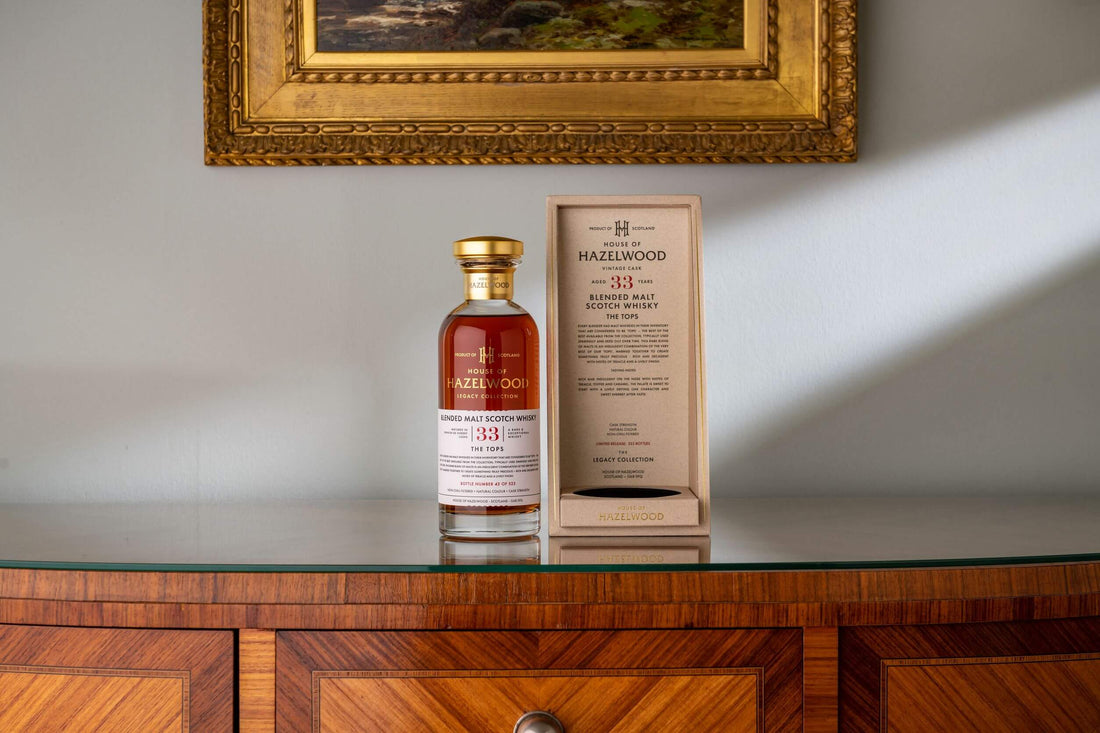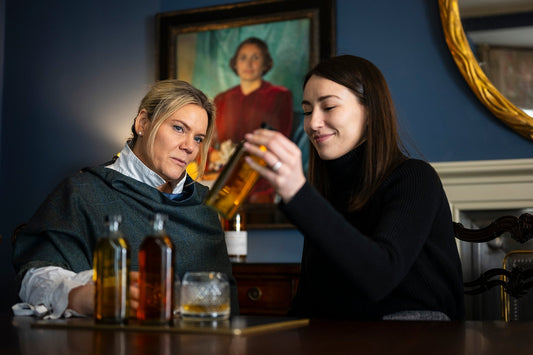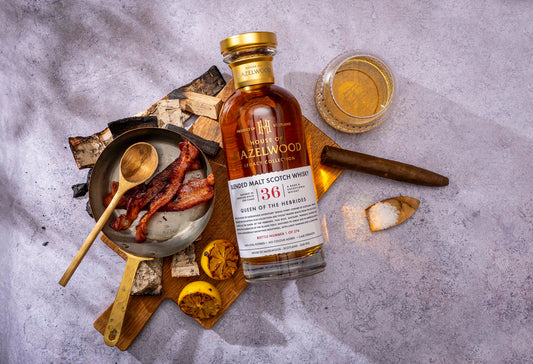Blended Malt Scotch Whisky is a category of Scotch Whisky that is much admired by those in-the-know but one that finds itself often overlooked – perhaps owing to misconceptions surrounding its production.
By delving into the alchemy behind Blended Malt Scotch Whisky, the thought-processes behind their conception and what they offer us, we can seek to discover what sets them apart and ultimately how they can – at their best – elevate the more common Single Malt offering.
Blended Malt Scotch Whisky vs Single Malt Scotch Whisky: What’s the Difference?
The classification criteria of Blended and Single Malt Scotch have been altered and updated over the centuries as Scotland has sought to protect the status of its treasured spirit.
Nowadays, the two most popular categories of Scotch can generally be defined as follows:
- Single Malt Scotch Whisky: A Malt whisky produced and bottled in a single distillery.
- Blended Scotch Whisky: a blend of at least one or more Single Malt Scotch whiskies with one or more Grain Scotch whiskies.
Here, this is also an important distinction to be made as we introduce a third category. Something arguably more exclusive and challenging to craft – the Blended Malt Scotch Whisky:
- Blended Malt Scotch Whisky: previously known as a “pure Malt”, a Blended Malt Scotch whisky is the combination of two or more Single Malt Scotch whiskies derived from at least two separate distilleries which are blended together.
Handpicking and combining these Single Malts provides a blender with the opportunity to bring together their spirits of choice to create something greater than the sum of its parts.
Dictated by generational expertise, instinct, or intuition, the selection of Single Malts to be married into a Blended Malt Scotch is the departure point for the eventual blend’s conception – with consideration given to the component Single Malts’ age, maturation cask, and distillery of origin.
A blender will identify these spirits based on the desired flavour profile they wish to achieve – the unique character each of the component spirits brings with it – and ultimately blend them into a unified, unique Blended Malt.

The Influence of the Cask on Blended Malt Scotch Whisky: Sunshine on Speyside
The arena for these interactions, the cask, provides further opportunity for the blender to unlock new layers of character, flavour, and texture from the Single Malts in their inventory.
By considering the Single Malts’ original maturation cask following its distillation, or by further maturing the new blend together, the blender can draw out specific flavours and character.
The most common casks used across Scotch whisky production are as follows:
- American Oak: provides woody aromas, with hints of spice, soft vanilla, and tobacco.
- European Oak: can yield a deeper colour, imparting flavours of spices, dried fruit, and resin. European oak is commonly used in Sherry production and retired casks are often earmarked to mature whisky.
- French Oak: a less common cask that is synonymous with more distinctive spiciness.
A blender must also consider the age, past usage, and qualities of the cask – whether it is a first fill cask (providing more prominent notes) or a cask that has been used several times before (which may be used to subtly refine the character within).
Our 39-year-old Blended Malt Scotch, Sunshine on Speyside, reflects this delicate balancing act and the profound impression a cask leaves on its inhabiting spirit.
Leading with notes of fresh pineapple and charred fruits on the nose, the blend is a showcase for the tropical flavours and extravagant cocktails that were so ubiquitous at the time of its distillation.
On the palate, a creamy caramelised barbecue smoke and bright zesty citrus emerge from the sweet layers of candied sweets – resulting in an indulgent cacophony of flavour.
The presence of these tropical flavours – whether by design or coincidence – is a reminder of the magic that a blender can conjure through the careful selection of spirit and cask.
A true one-of-a-kind Blended Malt Scotch that showcases its cask origins with pride.

Bringing Together the Best of Multiple Distilleries: A Trail of Smoke
In addition to the cask influence, the distilleries of origin of the Single Malts used in a Blended Malt Scotch are central to a blender’s decision-making.
Combining Single Malts from different distilleries allows a blender to bring together characteristic elements of each, uniting varying landscapes, distillation techniques, and provenance.
A Trail of Smoke, our 42-year-old Blended Malt Scotch whisky, is a fine example of the nuances, textures and flavours that a blend of origins can bring.
Comprised of malt whiskies sourced from across Scotland’s famous isles, A Trail of Smoke invites us on a meandering journey where these diverse flavours and characters are brought together.
Maritime meets meadow grass on the nose as herbaceous notes intertwine with notes of sea salt and characteristic woodsmoke.
The palate continues to wander along the path crafted, as notes of charred fruit swell and the peat foundation comes to the fore.
The whisky is perhaps the finest example of the diverse elements of different distilleries and landscapes being combined to create something entirely new that remains firmly anchored in its roots.
By exploring and understanding the range of Single Malts available, what each brings and how best they can complement one another, a blender is therefore able to tell a story through their chemistry – drawing the imbiber into a world of their own creation, celebrating the best that a region has to offer.

The Best Single Malts in Blended Malt Scotch Whisky: The Tops
From this inventory of specially selected malt whiskies, there are some that stand proudly above the others.
The best of these available Single Malts, known as The Tops, are those that are treasured by blenders as their finest resources and are often saved for special blends and statement releases.
At House of Hazelwood, our own expression, suitably named The Tops, aged for 33 years, is a rare expression of our most prized assets.
The Tops is suitably luxurious and indulgent – with a heavy sherry-cask influence that helps to support rich notes of treacle and toffee initially on the nose.
On the palate, this symphony of flavours crescendos into a warming oak character before finishing with a sweet sherbet aftertaste.
Alone, these component Single Malts may offer just one layer of this rich flavour – whereas together, they play in harmony – resulting in something altogether more complete, more satisfying, and ultimately more special.
Why Choose a Blended Malt Scotch Whisky over a Single Malt?
A Blended Malt Scotch Whisky can be seen as an altogether more deliberate, or more intentional, expression of whisky’s finest qualities.
The magic that occurs as Single Malts come together allows for a whole new level of character and complexity to emerge – crafting an experience that is deeply linked to the blender, to generations of expertise, and to the landscapes from which the component spirits originate.
In short, if we consider Single Malts as primary colours and the blender as an artist, Blended Malt Scotch Whiskies are their masterpieces.




